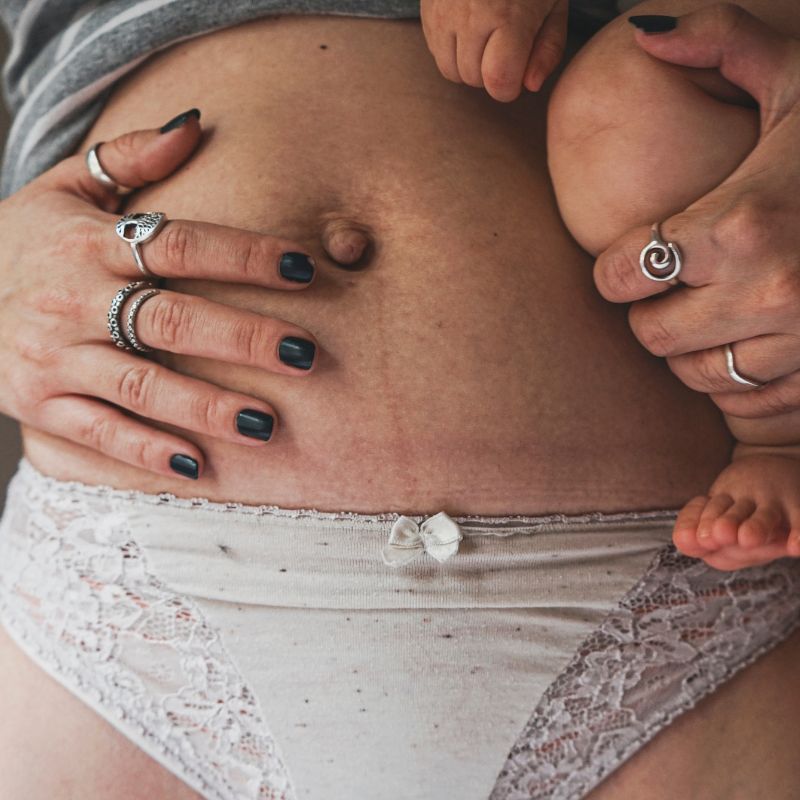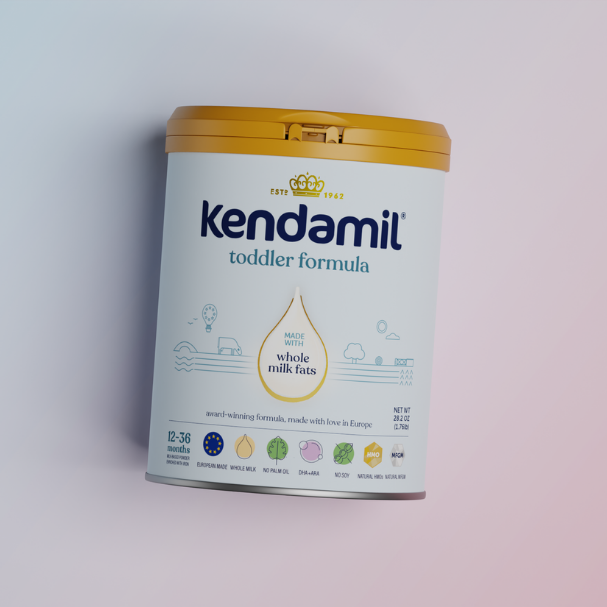For most expectant moms, one of the most worrying thoughts behind having a cesarean section is the recovery! Don’t worry, as we’re going to cover everything you need to know about c-section recovery in this blog. You could say I’m pretty well equipped to handle this topic - I’m Emma - a midwife, and a mom myself. I’ve looked after plenty of women in the postpartum period who had a ‘c-section’, and I’ve even had one myself when my son was born! Let’s get into your top questions:
How long does it take to recover from a cesarean section?
The recovery timeline after a c-section can vary, as every person's experience is unique! For example, if you have had an emergency c-section, it typically takes longer to recover compared to that of a planned one. Regardless, most women can expect to stay in the hospital for one to three days after the surgery. During this time, the nurses will monitor you for any complications, and help with pain management. After you are discharged, it’s important to listen to any advice and guidance given for a smooth recovery period.
- When is it safe to resume driving again after a cesarean section?
Driving after a c-section is usually not recommended for at least six weeks, or until you feel comfortable and are no longer taking prescription pain medication. Typically, a good rule of thumb is making sure you could do an emergency stop without being in a lot of pain. It's crucial to consult with your healthcare provider before resuming driving to ensure that you're physically capable and safe to do so.
- When can I start exercising again?
Again, this is another one which is individual to each person. You shouldn’t be jumping straight back into the gym until you have been signed off by your healthcare provider, however light exercises like walking can be started when you feel ready to promote circulation and aid in healing. Your doctor will assess how ready you are to return to any form of exercise, and hopefully give you the green light. For more information on postpartum exercise, check out our previous blog on exercising after childbirth.
- When can I expect my energy levels to return to normal after a cesarean birth?
Energy levels can vary greatly among individuals, but many women start to feel a tiny bit more like themselves around six to eight weeks postpartum. However, it's essential to prioritize rest and self-care during this time and not rush the recovery process. Eating well and taking regular walks can really help lift your energy levels.
- Is it common to experience emotional changes after a c-section?
The emotional recovery after a c-section is just as important as the physical aspect. It's entirely normal to experience a range of emotions during this time, including feeling overwhelmed, anxious, or even a sense of disappointment if your birth didn't go as planned. Remember to give yourself grace and seek support from loved ones. You can also talk to your healthcare provider, who can direct you on where to seek further help if you feel it is affecting your mental health.
- How do I know if my c-section incision is healing properly?
Concerns about the appearance of the cesarean scar are common amongst new moms. While the scar will initially be red and raised, it typically fades and flattens over time. However, if you have concerns about your scar's appearance or healing progress, don't hesitate to discuss them with your healthcare provider.
How should I care for my c-section scar?
After a c-section, your OB-GYN will typically provide detailed post-operative instructions. These instructions often include guidelines on pain management, wound care, and activity restrictions. It's essential to follow these instructions closely to promote healing and reduce the risk of any complications.
- How do I know if my c-section incision is healing properly?
- Wound/ dressing care: Proper wound care is essential for promoting healing and preventing infection. Keep the incision site clean and dry, and follow any specific dressing instructions provided by your healthcare provider. Avoid applying creams or ointments to the scar unless directed otherwise.
-
Hygiene: Maintaining good hygiene is crucial for preventing infection. Take showers instead of baths to keep the incision area clean, and gently pat the area dry with a clean towel afterward. Avoid scrubbing or rubbing the incision site, as this can irritate the skin and delay healing.
- What are the signs of infection after a c-section?
Signs of infection in a cesarean incision may include increased redness, swelling, warmth, or drainage from the wound. You may also experience fever, chills, or increasing pain at the incision site. If you notice any of these symptoms, contact your OB-GYN immediately for further evaluation and treatment.
- What should I expect in terms of physical limitations during cesarean recovery?
During the initial recovery period, you may experience some physical limitations, such as difficulty with activities that involve bending, lifting, or twisting, like getting in and out of bed. It's essential to avoid heavy lifting and strenuous activities until you receive clearance from your healthcare provider. Rule of thumb is to avoid lifting anything heavier than your baby.
- How can I prevent complications during cesarean recovery?
To prevent complications during cesarean recovery, follow your healthcare provider's instructions carefully, including taking prescribed medications as directed, attending follow-up appointments, and monitoring your incision for any signs of infection or complications. Make sure to prioritize rest as much as possible, and avoid overexertion to allow your body ample time to heal.
How can I manage pain after a cesarean section?Recovering from a cesarean birth involves managing discomfort and pain effectively to promote healing and enhance overall well-being.
- Pain Management Options: In hospital, you will have access to stronger opioid medications such as morphine. On some occasions, this is also available to take home with you, so be sure to ask your OB-GYN. It’s really important to take regular pain medication at home if needed - set reminders on your phone so you don’t forget amongst the chaos of newborn life!
- How to reduce pain: Using supportive pillows or cushions while sitting or lying down can also help alleviate pressure on the incision site. It's essential to listen to your body and avoid activities that exacerbate pain or strain the abdominal muscles.
- When to seek help: Signs of infection, such as increased redness, swelling, warmth, or drainage from the incision site. Similarly, if you experience persistent or worsening pain that is not relieved by prescribed medications, or if you develop symptoms suggestive of blood clots, such as swelling or tenderness in the legs, be sure to contact a healthcare professional.
C-section recovery might not be the easiest journey, but with these tips in your back pocket, you'll be navigating it like a pro. Remember to take it easy, listen to your body's cues, and don't hesitate to reach out for help when you need it. If you have any worries, be sure to contact your healthcare provider.
Support and resources:
Many women seek information and support from healthcare professionals, online forums, and support groups to navigate the challenges of Cesarean recovery. Websites such as What To Expect, The Bump, and BabyCenter host discussion boards where you can connect with other mothers who have had similar experiences, share advice, and seek support.
Here are some further support resources for Cesarean recovery:














